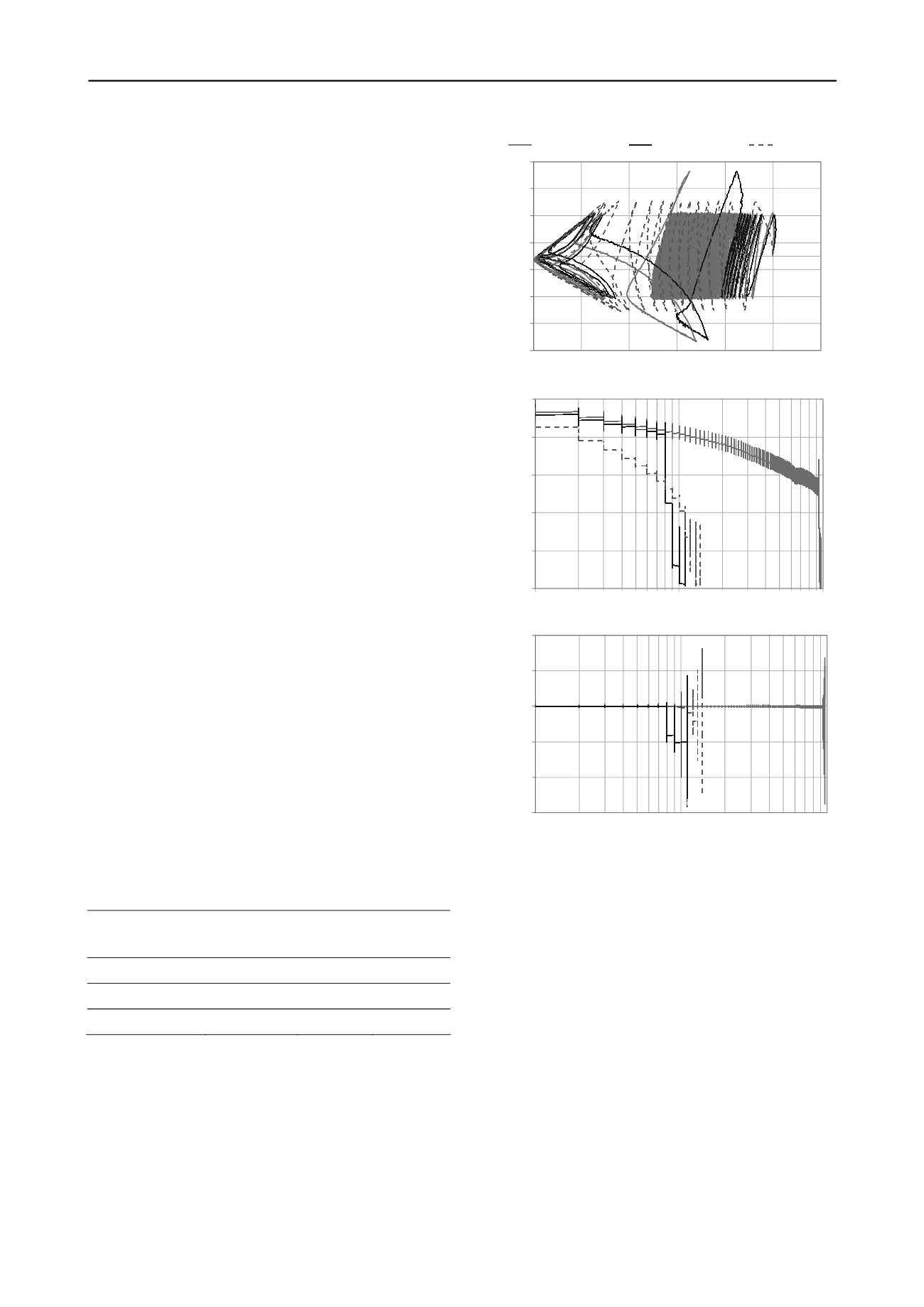
1460
Proceedings of the 18
th
International Conference on Soil Mechanics and Geotechnical Engineering, Paris 2013
considered in laboratory testing. In order to study the influence
of the time instant at which the maximum peak load occurs, its
location in uniform loading was varied in each test.
2.2
Experimental procedures
2.2.1
Material and specimen preparation
All tests were performed on an artificial sand, named Coimbra
Sand, which represents the soil conditions of Quaternary
deposits located along the banks of Mondego River. The sand
was graded between no. 40 (0.425 mm) and no. 100 (0.150 mm)
sieves of ASTM series. The mean grain size is about 0.28 mm,
while the minimum and maximum void ratios are about 0.48
and 0.81, respectively. Due to the susceptibility of these
deposits to liquefaction, as observed during past earthquakes
(e.g., Coelho et al. 2007), this sand has been tested in different
Portuguese research institutions (Santos et al. 2012).
Air-pluviation of dry sand was used to prepare 38 mm
diameter samples with height/diameter ratio close to 2 and a
relative density close to 40 %. All samples were saturated by
flowing de-aired water through the bottom to its top (using a
small differential pressure of about 10 kPa), at low and high
back-pressures, until a Skempton’s B-value close to 0.99 was
measured in all tests. Moreover, in order to ensure saturation
during the whole experiment, the samples were tested using a
back-pressure of 450 kPa. All samples were isotropically
consolidated to an effective pressure of 100 kPa before
shearing.
It is also noteworthy that the extension load was applied by
means of a flexible sleeve sealing a plane top cap to an
adjustable reaction head, in order to control radial and axial
stresses independently.
2.2.2
Testing program
Three undrained cyclic triaxial (UCT) tests were carried out on
samples of Coimbra sand. In two of them, a singular loading
cyclic with a deviatoric peak stress amplitude of about
|q
p
| = 60 kPa was applied, which corresponds to double the
amplitude of the remaining uniform loading |q
unif
| = 30 kPa. As
referred to earlier, the position of the singular loading cycle was
varied in each test. Namely, it was applied at a mean effective
stress, p’
p
, of about 80 and 50 kPa, as detailed in Table 1. In the
last test, a constant deviatoric stress oscillation of 40 kPa
(corresponding approximately to 0.65 |q
p
|) was used. All
samples were tested until large strains and excess pore water
pressure were observed.
Table 1. Characteristics of undrained cyclic triaxial tests performed to
tudy sand liquefaction under irregular loading conditions.
s
Test ID
|q
unif
|
(kPa)
|q
p
|
(kPa)
p'
p
(kPa)
UCT/30/60/50
30
60
50
UCT/30/60/80
30
60
80
UCT/40
40
–
–
2.3
Effect of a singular peak load on the liquefaction
resistance of a sand
Figure 1 compares the behaviour of identical samples when
subjected to non-uniform (UCT/30/60/50 and UCT/30/60/80)
and uniform (UCT40) loading. It can be seen that, in all tests,
the stress paths become temporarily close to zero (Figure 1a),
i.e. cyclic softening occurred, confirming the liquefaction
susceptibility of those samples.
-0.7
-0.5
-0.3
-0.1
0.1
0.3
0.5
0.7
0.0
0.2
0.4
0.6
0.8
1.0
1.2
q / p'
0
()
p' / p'
0
( )
UCT/30/60/50
UCT/30/60/80
UCT/40
0.0
0.2
0.4
0.6
0.8
1.0
1
10
100
p' / p'
0
( )
N ( )
(b)
-4.5
-3.0
-1.5
0.0
1.5
3.0
1
10
100
q
(%)
N ( )
(c)
Figure 1. Comparison between the behaviour of similar samples
subjected to non-uniform and uniform loading: (a) stress path; (b) mean
effective stress degradation with the number of cycles and (c) deviatoric
strain variation with the number of cycles.
The main difference in the response of the samples is related
to the effect of the peak load on its resistance. In fact, in test
UCT40 the rate of mean effective stress degradation is initially
slightly faster but remains fairly constant until p’ / p’
0
is close to
0.3 (Figure 1b), while in the non-uniform tests that rate
suddenly increases as the singular peak occurs, leading to a very
rapid degradation of the mean effective stress after that moment.
As a consequence, the number of cycles, N, required to obtain a
double amplitude of deviatoric strain,
q
, of 5 % is significantly
greater when the peak load is applied at p’ / p’
0
of 0.5
(UCT/30/60/50) than when it occurs at p’ / p’
0
of 0.8
(UCT/30/60/80) (Figure 1c). This suggests that the location of
the peak load plays an important role in sand liquefaction, in
opposition to what is assumed in the current methodology used
to convert the random stress history of earthquake motion into
an equivalent uniform cyclic stress history (as mentioned in
Section 2.1). More specifically, when the singular load peak is
applied later, either a greater number of cycles is required for
the onset of liquefaction or the stress level needed is higher, in
accordance with Shen et al. (1978).


